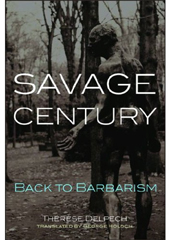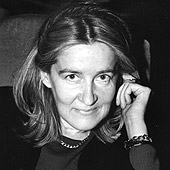1905: The Birth of Modernity
How did the year 1905 play a very specific role in the history of human consciousness?
December 29, 2007

In science and art, 1905 is known for three events. In physics, the publication in Switzerland of Albert Einstein’s paper presenting the theory of special relativity and of three other papers by him would spark a revolution comparable to Newton’s three centuries earlier. In the history of painting, the year saw the first exhibition of the “Fauves” in the Salon d’automne in Paris, a show art historians point to as the beginning of 20th century art.
Finally, 1905 witnessed the publication of one of the most important and certainly the most provocative of the works of Sigmund Freud, whose thought was to dominate the century to such an extent that it is not an exaggeration to speak of the century of the unconscious.
A century later, everyone knows that 1905 was the miracle year for Einstein who — isolated from the scientific community — had for some time been attempting to solve the problems that the mathematician Henri Poincaré considered the most important ones remaining unsolved. In that year, the publication of Einstein’s “On the Electrodynamics of Moving Bodies” and three other papers — on light, on Brownian movement and on the equivalence of mass and energy — revolutionized modern physics.
Thanks to this work, the difficulty of relating the laws of motion to Maxwell’s law within a unified theory was resolved. Einstein’s work, which was completed in 1916 by the theory of general relativity, opened a century shaped by physics — as the 21st will probably be shaped by biology.
The new physics had both civilian and military applications — with the latter playing a substantial role in combat. The most revolutionary of them for international relations was nuclear weapons, which would endow mankind with an unprecedented power of destruction.
Einstein is said to have attributed the enormous fame of his theory, even among people who did not understand it in the slightest, to the concept of relativity, which resonated with the consciousness of the age. He was not referring to the way in which the relativity of time changed the theory of universal gravitation or of possible digressions around the fact that the flow of time depended on the systems of reference considered — a very contemporary theme. He was thinking of much more general propositions that he himself sometimes ridiculed.
He is supposed to have often repeated: “Relative, relative, everything is relative, that’s the secret of my success.” Where scientists saw a renewal of theoretical thought unprecedented since Newton, others saw only the scientific expression of a much larger intellectual movement: Historical relativism.
The connections between the two, however, were not clear. The roots of historical relativism lie in the 19th century with Herder, but the spread and persistence of this school of thought have been astonishing. A hundred years later, we are still living in an atmosphere imbued by it — in a world in which nothing seems stable or solid, even though science has called into question the principles of Einstein’s physical theory.
1905 was also the year in which an awareness developed that a new form of art had arrived with the new century. That spring, the poet and critic, Charles Morice, had sent a number of painters five questions. The first of them dealt with the future of painting: “Do you have the feeling that art today is taking new directions?”
Answers from 60 artists showed that in artistic circles at the time, the feeling was that art had reached a turning point. Further, painters felt they were living in a time of great change: “The possibility of novelty in art…has strangely stamped and colored the present time.” As if to illustrate that belief, the 1905 Salon d’automne showed for the first time works of the painters that soon became known as the Fauves, or “wild beasts.” The term is a reflection of their vivid colors, spontaneous, violent brushstrokes and drawing that broke with academic norms.
A few years after the Fauves burst on the scene, the Futurist movement arose in Italy, containing clearly apocalyptic elements and openly declaring itself in favor of a major war, which alone, the Futurists believed, could bring about the hoped-for renewal of art and culture more generally.
“We want to sing of the love of danger…we want to exalt aggressive movement, somersaults, slaps in the face and blows of the fist.” In a terrible irony of history, the movement’s greatest artist, Umberto Boccioni, died at the front in 1916, in a manner that could not have been more “archaic.”
Finally, 1905 was the year in which Freud published “Three Essays on the Theory of Sexuality,” a little book that transformed research on the human psyche. Some consider it — along with “The Interpretation of Dreams,” published in 1900 — the most memorable and original contribution of the father of psychoanalysis. True or not, it is the work that Freud revised most often for new editions. It is also the one that created the greatest scandal. Fewer than 10,000 copies sold between 1905 and 1920, but countless commentaries on the little-read work left its author extremely unpopular.
If relativity and quantum theory were the scientific theories of the 20th century, neurosis was its psychic reality. The capacity to embody utopias gave political thought exceptional power. Doctrines of arbitrary authority, contempt for freedom, belief in the necessity of violence and the morality of war captured the imagination of the masses. Above all, the crimes of the 20th century were largely crimes of the unconscious. That is why they have remained deeply enigmatic.
Freud, whose final book was on Moses, wanted to be a Gesetzgeber, a giver of laws — like the great man of the Bible. In a sense, that is what he became for the 20th century through his discoveries of the most hidden aspects of human relations and his gradual taking on of all the mental content of existence.
The modern science of the mind thus echoed religious pessimism and shared its views on the inevitability of corruption. Its influence was not really felt until after the First World War, which destroyed confidence in morality and in civilization. The pressure of the unconscious continued to increase after 1918 — and psychoanalysis made it possible to enter the forbidden territories of the soul.
But every attempt to explain human beings made them yet more incomprehensible, revealing mankind’s contradictions in all their starkness. Good and evil came from the same source, and inhumanity was part and parcel of human nature.
Editor’s Note: This feature is adapted from Savage Century: Back to Barbarism by Thérèse Delpech (Copyright 2007, Carnegie Endowment for International Peace). Reprinted with permission of the publisher.
Read previous
Ecotourism in Yunnan (Part V)
December 28, 2007
